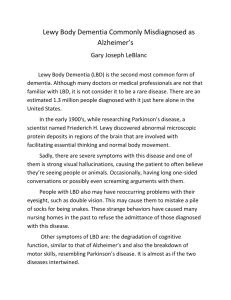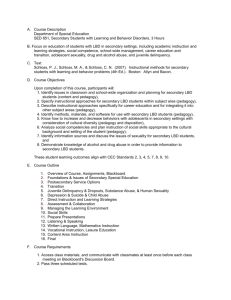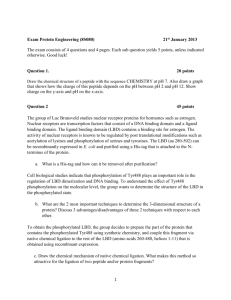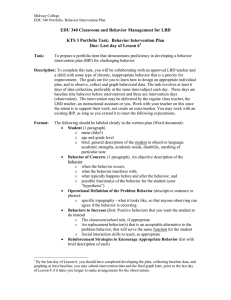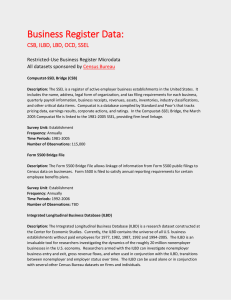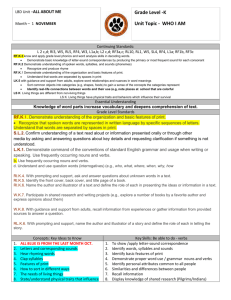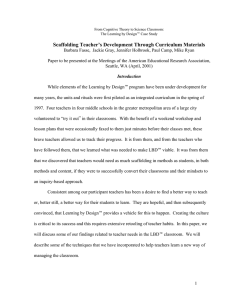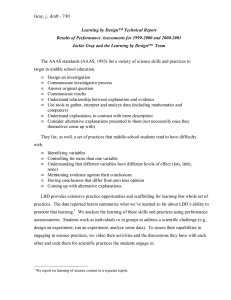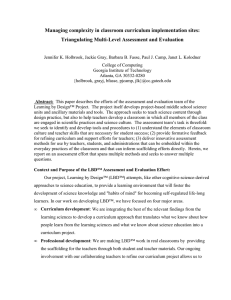Towards Semantic Literature Based Discovery
advertisement
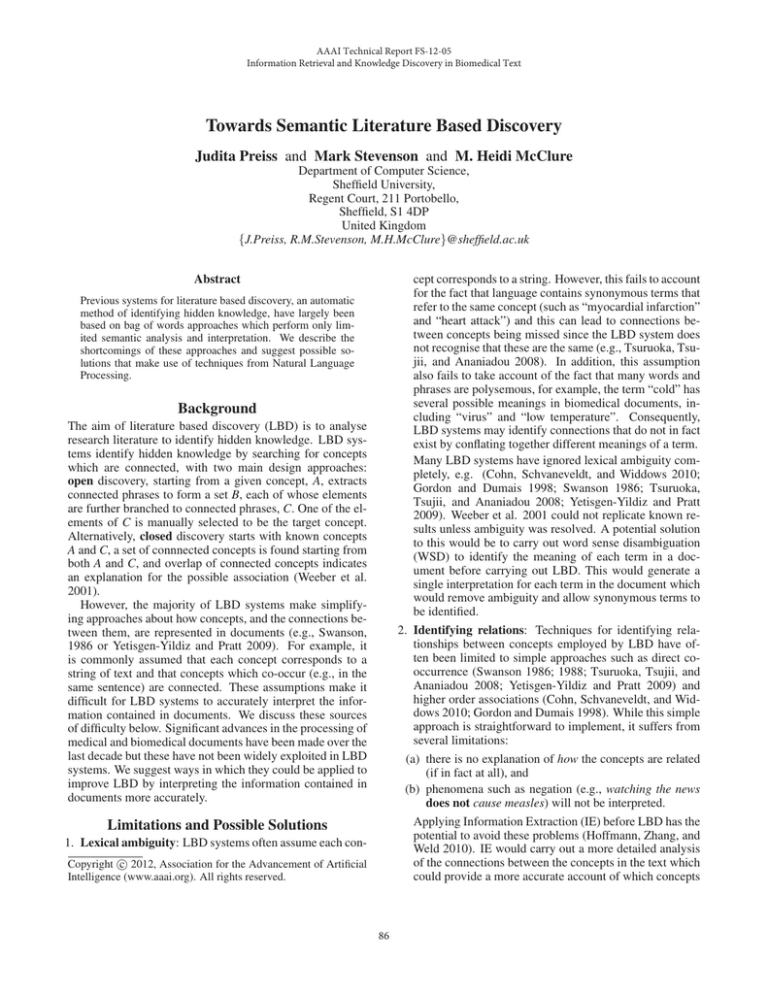
AAAI Technical Report FS-12-05
Information Retrieval and Knowledge Discovery in Biomedical Text
Towards Semantic Literature Based Discovery
Judita Preiss and Mark Stevenson and M. Heidi McClure
Department of Computer Science,
Sheffield University,
Regent Court, 211 Portobello,
Sheffield, S1 4DP
United Kingdom
{J.Preiss, R.M.Stevenson, M.H.McClure}@sheffield.ac.uk
Abstract
cept corresponds to a string. However, this fails to account
for the fact that language contains synonymous terms that
refer to the same concept (such as “myocardial infarction”
and “heart attack”) and this can lead to connections between concepts being missed since the LBD system does
not recognise that these are the same (e.g., Tsuruoka, Tsujii, and Ananiadou 2008). In addition, this assumption
also fails to take account of the fact that many words and
phrases are polysemous, for example, the term “cold” has
several possible meanings in biomedical documents, including “virus” and “low temperature”. Consequently,
LBD systems may identify connections that do not in fact
exist by conflating together different meanings of a term.
Many LBD systems have ignored lexical ambiguity completely, e.g. (Cohn, Schvaneveldt, and Widdows 2010;
Gordon and Dumais 1998; Swanson 1986; Tsuruoka,
Tsujii, and Ananiadou 2008; Yetisgen-Yildiz and Pratt
2009). Weeber et al. 2001 could not replicate known results unless ambiguity was resolved. A potential solution
to this would be to carry out word sense disambiguation
(WSD) to identify the meaning of each term in a document before carrying out LBD. This would generate a
single interpretation for each term in the document which
would remove ambiguity and allow synonymous terms to
be identified.
2. Identifying relations: Techniques for identifying relationships between concepts employed by LBD have often been limited to simple approaches such as direct cooccurrence (Swanson 1986; 1988; Tsuruoka, Tsujii, and
Ananiadou 2008; Yetisgen-Yildiz and Pratt 2009) and
higher order associations (Cohn, Schvaneveldt, and Widdows 2010; Gordon and Dumais 1998). While this simple
approach is straightforward to implement, it suffers from
several limitations:
(a) there is no explanation of how the concepts are related
(if in fact at all), and
(b) phenomena such as negation (e.g., watching the news
does not cause measles) will not be interpreted.
Applying Information Extraction (IE) before LBD has the
potential to avoid these problems (Hoffmann, Zhang, and
Weld 2010). IE would carry out a more detailed analysis
of the connections between the concepts in the text which
could provide a more accurate account of which concepts
Previous systems for literature based discovery, an automatic
method of identifying hidden knowledge, have largely been
based on bag of words approaches which perform only limited semantic analysis and interpretation. We describe the
shortcomings of these approaches and suggest possible solutions that make use of techniques from Natural Language
Processing.
Background
The aim of literature based discovery (LBD) is to analyse
research literature to identify hidden knowledge. LBD systems identify hidden knowledge by searching for concepts
which are connected, with two main design approaches:
open discovery, starting from a given concept, A, extracts
connected phrases to form a set B, each of whose elements
are further branched to connected phrases, C. One of the elements of C is manually selected to be the target concept.
Alternatively, closed discovery starts with known concepts
A and C, a set of connnected concepts is found starting from
both A and C, and overlap of connected concepts indicates
an explanation for the possible association (Weeber et al.
2001).
However, the majority of LBD systems make simplifying approaches about how concepts, and the connections between them, are represented in documents (e.g., Swanson,
1986 or Yetisgen-Yildiz and Pratt 2009). For example, it
is commonly assumed that each concept corresponds to a
string of text and that concepts which co-occur (e.g., in the
same sentence) are connected. These assumptions make it
difficult for LBD systems to accurately interpret the information contained in documents. We discuss these sources
of difficulty below. Significant advances in the processing of
medical and biomedical documents have been made over the
last decade but these have not been widely exploited in LBD
systems. We suggest ways in which they could be applied to
improve LBD by interpreting the information contained in
documents more accurately.
Limitations and Possible Solutions
1. Lexical ambiguity: LBD systems often assume each conc 2012, Association for the Advancement of Artificial
Copyright Intelligence (www.aaai.org). All rights reserved.
86
are connected and what the relation between them is. Recent work has explored how information about relations
can be integrated into LBD systems (Cohen et al. 2011).
relations and patterns in text. In Human Language Technology Conference of the North American Chapter of the Association of Computational Linguistics (HLT/NAACL), 296–
303.
Etzioni, O.; Fader, A.; Christensen, J.; Soderland, S.; and
Mausam. 2011. Open information extraction: The second
generation. In IJCAI, 3–10.
Gordon, M., and Dumais, S. 1998. Using latent semantic indexing for literature based discovery. Journal of the
American Society for Information Science 49(8):674–685.
Hoffmann, R.; Zhang, C.; and Weld, D. 2010. Learning
5000 relational extractors. In Proc. ACL, 286–295.
Swanson, D. 1986. Fish oil, Raynaud’s syndrome, and
undiscovered public knowledge. Perspectives in Biology and
Medicine 30:7–18.
Swanson, D. 1988. Migraine and magnesium – 11 neglected connections. Perpectives in Biology and Medicine
31(4):526–557.
Tsuruoka, Y.; Tsujii, J.; and Ananiadou, S. 2008. Facta:
a text search engine for finding associated biomedical concepts. Bioinformatics 24(21):2559–2560.
Weeber, M.; Vos, R.; Klein, H.; and de Jong-van den Berg,
L. T. W. 2001. Using concepts in literature-based discovery: Simulating Swanson’s Reynaud – fish oil and migraine
– magnesium discoveries. Journal of the American Society
for Information Science and Technology 52(7):548–557.
Yetisgen-Yildiz, M., and Pratt, W. 2009. A new evaluation methodology for literature-based discovery. Journal of
Biomedical Informatics 42(4):633–643.
3. Interpreting output: The output of LBD systems often
consist of a list of pairs of concepts that may be connected but no attempt is made to explain what the connection between them is. However, users of LBD systems
are likely to be interested in the way in which concepts
are connected and may be looking for concepts that are
connected in a particular way (e.g., a potential cure).
Techniques from data mining could be applied to provide interpretations for the user (Etzioni et al. 2011;
Culotta, McCallum, and Betz 2006), possibly by making further use of the information about connections between concepts produced by LBD. Relationship extraction might be used to explain the relationships between
A and B and between B and C concepts. To explain an
LBD A and C pair, learning techniques may be able to be
trained on a non-LBD corpus of A-B-C relations where
the relationships between A and B, B and C, and A and
C are all known. The technique would then be able to
study LBD candidate discoveries and present A and C relationships given certain A and B and certain B and C
relationships.
Conclusion
Interpreting the meaning of text is a challenging task which
has not yet been solved. However, significant progress in
the interpretation of biomedical documents has been made
by the Natural Language Processing community over the
last decade. Many LBD systems have used relatively simple
techniques for interpreting documents which do not make
use of the latest technologies. We highlighted some of the
ways in which the limits LBD systems and suggest Natural
Language Processing technologies that could be applied to
improve LBD.
Acknowledgements
Judita Preiss was supported by the EPSRC grant Language
Processing for Literature Based Discovery in Medicine, and
M. Heidi McClure would like to thank her employer, Intelligent Software Solutions, for encouraging and supporting her
research in the areas of LBD and natural language processing.
References
Cohen, T.; Widdows, D.; Schvaneveldt, R.; and Rindflesch,
T. 2011. Finding schizophrenia’s prozac: Emergent relational similarity in predication space. In Proceedings of
the Fifth International Symposium on Quantum Interactions,
48–59.
Cohn, T.; Schvaneveldt, R.; and Widdows, D. 2010. Reflective random indexing and indirect inference. Journal of
Biomedical Informatics 43:240–256.
Culotta, A.; McCallum, A.; and Betz, J. 2006. Integrating
probabilistic extraction models and data mining to discover
87

